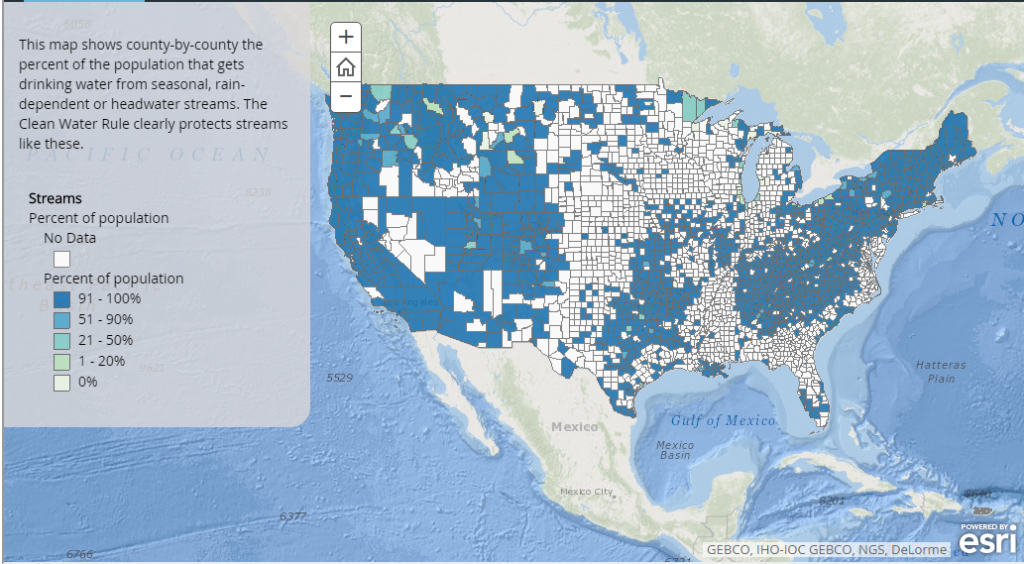North Dakota judge blocks Clean Water Rule in 13 states
Judge Ralph Erickson of the District Court for the District of North Dakota granted an injunction to 13 states last Thursday, blocking a new ruling from the Environmental Protection Agency (EPA) from taking effect. The new rule, called the Clean Water Rule, would expand the amount of water under the agency’s regulatory oversight by 2.84% to 4.65%, Erickson said.
Erickson found the 13 states met the conditions necessary for a preliminary injunction, including that they would likely be harmed if courts did not act and that they are likely to succeed when their underlying lawsuit against the rule is decided.
The injunction will only prevent the EPA’s new rule from taking effect in the 13 states that filed the suit. Those states are: Alaska, Arizona, Arkansas, Colorado, Idaho, Missouri, Montana, Nebraska, Nevada, New Mexico, North Dakota, South Dakota and Wyoming. Opponents of the Clean Water Rule say it represents an unprecedented increase in the EPA’s regulatory power, going so far as to include certain types of ditches, ponds and streams that only flow when it rains, reports the Washington Business Journal.
The EPA’s factsheet for the new rule says that the focus is on streams, rather than ditches. “The rule limits protection to ditches that are constructed out of streams or function like streams and can carry pollution downstream. So ditches that are not constructed in streams and that flow only when it rains are not covered,” the EPA said.
In order to be considered for protection under the new rule, “a tributary must show physical features of flowing water – a bed, bank, and ordinary high water mark – to warrant protection.”
The 13 states, led by North Dakota, are participating in just one of 10 lawsuits against the water rule. In total, 29 states, along with business interests representing energy, developers, farmers and others, are suing.
The larger legislative picture
The Clean Water Rule is just one part of the EPA’s strategy to lower pollution in the water and in the air. Most recently, the EPA announced the final version of its Clean Power Plan, which raised the emissions-reduction targets by 2% from the previous version of the bill. The Clean Power Plan is also expected to be the target of litigation, with opponents of the bill saying it based on a flawed legal justification.
The National Federation of Independent Business said the latest injunction “threw a giant wrench into the EPA and Army Corps’ plan to radically expand their power,” said Dan Danner, head of the NFIB, which has also filed a lawsuit against the EPA.
Many parties have filed for injunctions similar to the one granted by District Court Judge Erikson, but most have been dismissed or deferred to the Court of Appeals for the Sixth Circuit in Cincinnati, reports The Hill. On August 26, a federal judge in West Virginia declined to block the EPA’s Clean Water Rule, while another in the District Court for the Southern District of Georgia declined a plea from 11 states, saying she lacked jurisdiction.
In June, the U.S. Supreme Court ruled against the EPA on proposed regulations regarding the limits on the emission of mercury and other toxic pollutants from coal-fired power plants, saying the financial burden outweighed the potential benefits. In the majority opinion, Associate Justice Antonin Scalia wrote the EPA overstepped its authority when it failed to consider costs before deciding to regulate mercury and other pollutants.
In its lawsuit against the Clean Water Rule, the NFIB that the EPA had exceeded its authority in a similar fashion by failing to consider the potential economic impacts of the new rule.
Last Friday, the EPA submitted its proposal to reduce ozone emissions to the Office of Management and Budget (OMB) for a final review. The proposal would see the ground-level ozone emission standard of 75 parts per billion (ppb) reduced to a range of 65-70, or potentially down to 60 ppb. The OMB will have one month to consider the regulation’s costs and benefits before a court-ordered October 1 deadline for the EPA to release the final rule.



